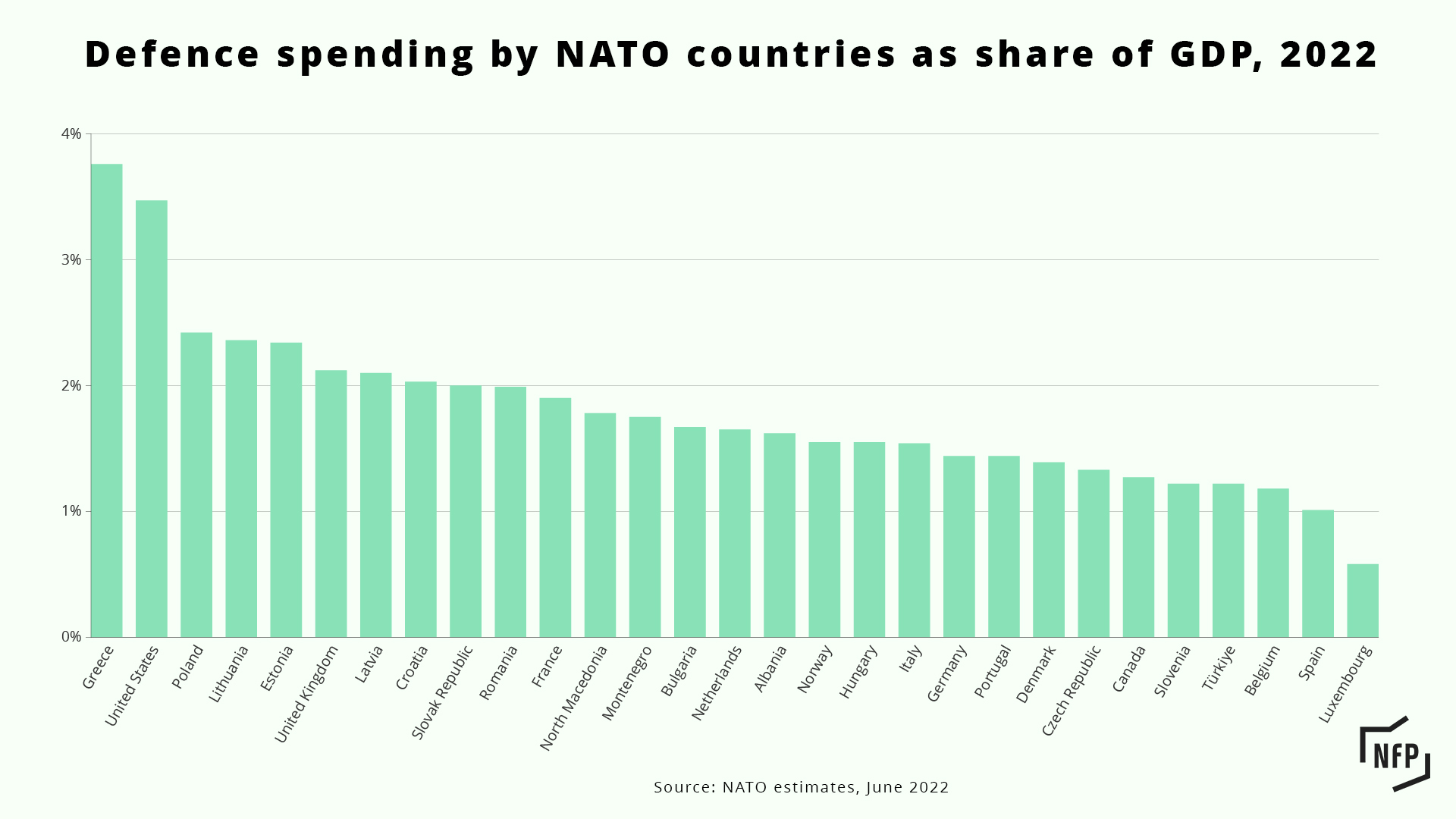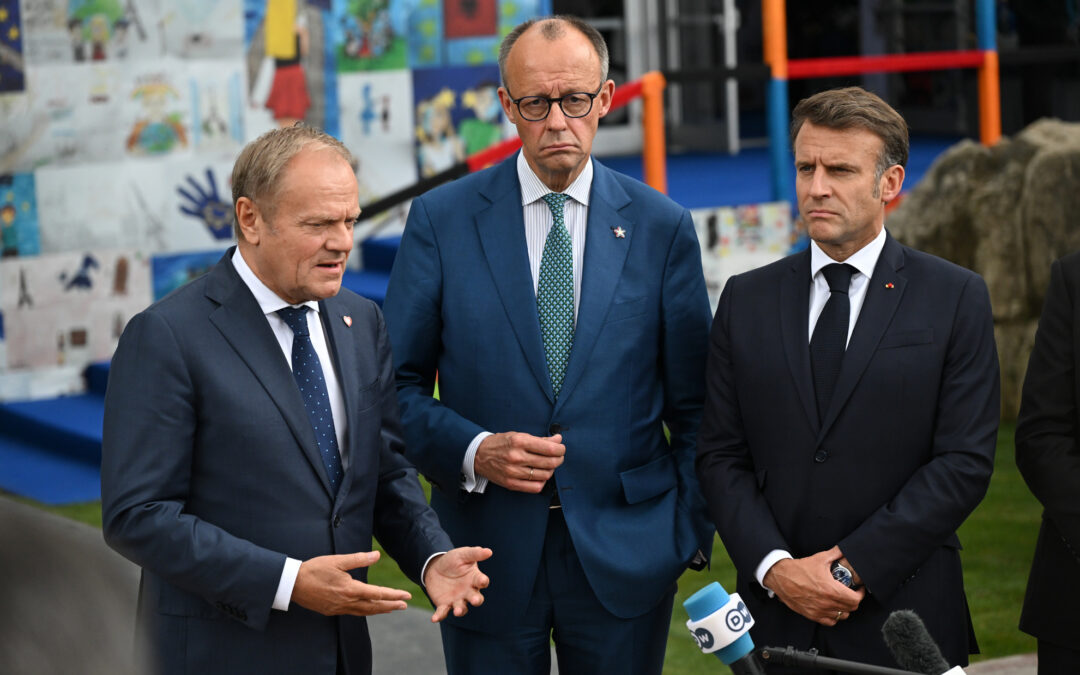Poland plans to increase its defence spending to 4% of GDP this year, which on current figures would be the highest level in NATO.
“The war in Ukraine means that we have to arm ourselves even faster,” declared Prime Minister Mateusz Morawiecki on Monday. “That is why we will make an unprecedented effort this year: 4% of GDP for the Polish armed forces, which may be the largest percentage among all NATO countries.”
“This will be clear evidence for all countries [that] we will defend our land, that Poland is safe, that Poland will be safer together with our allies,” added Morawiecki.
According to NATO estimates, in 2022 the alliance spent 2.57% of its combined GDP on defence. The biggest relative spenders were Greece (3.76%) and the United States (3.47%), with Poland third on 2.42%. Twenty of NATO’s 28 members spent less than the 2% guideline figure agreed by them in 2006.

Poland last year introduced a Homeland Defence Act that raised the defence budget to at least 3% of GDP from this year and set a target of doubling the size of the armed forces from 150,000 to 300,000 personnel.
The 2023 state budget, which has been approved by the lower chamber of the Polish parliament, the Sejm, provides for defence spending of 97.4 billion zloty, or nearly 4% of GDP. In 2015, military spending was at 37 billion zloty, or 2.2% of GDP.
Since Russia’s invasion of Ukraine, Poland has embarked on a military spending spree, including signing deals for hundreds of tanks and howitzers from the US and South Korea. Warsaw is also buying Patriot air defence systems, HIMARS rocket launchers and F-35 combat aircraft from the US.
“We have fixed public finances and armed the Polish soldier,” said Morawiecki, whose government faces a tough reelection bid this autumn after eight years in power. He accused previous governments of “neglecting, disarming and reducing” the armed forces “for many years”.
The defence minister, Mariusz Błaszczak last week announced that 2022 saw the largest number of new recruits join the armed forces since the end of compulsory military service in 2008.
However, critics have noted that last year also saw larger than expected numbers of military personnel quit. Media reports have suggested that many were experienced operatives and that it will take years to train replacements.
Main photo credit: Krystian Maj/KPRM (under CC BY-NC-ND 3.0 PL)

Alicja Ptak is deputy editor-in-chief of Notes from Poland and a multimedia journalist. She has written for Clean Energy Wire and The Times, and she hosts her own podcast, The Warsaw Wire, on Poland’s economy and energy sector. She previously worked for Reuters.




















